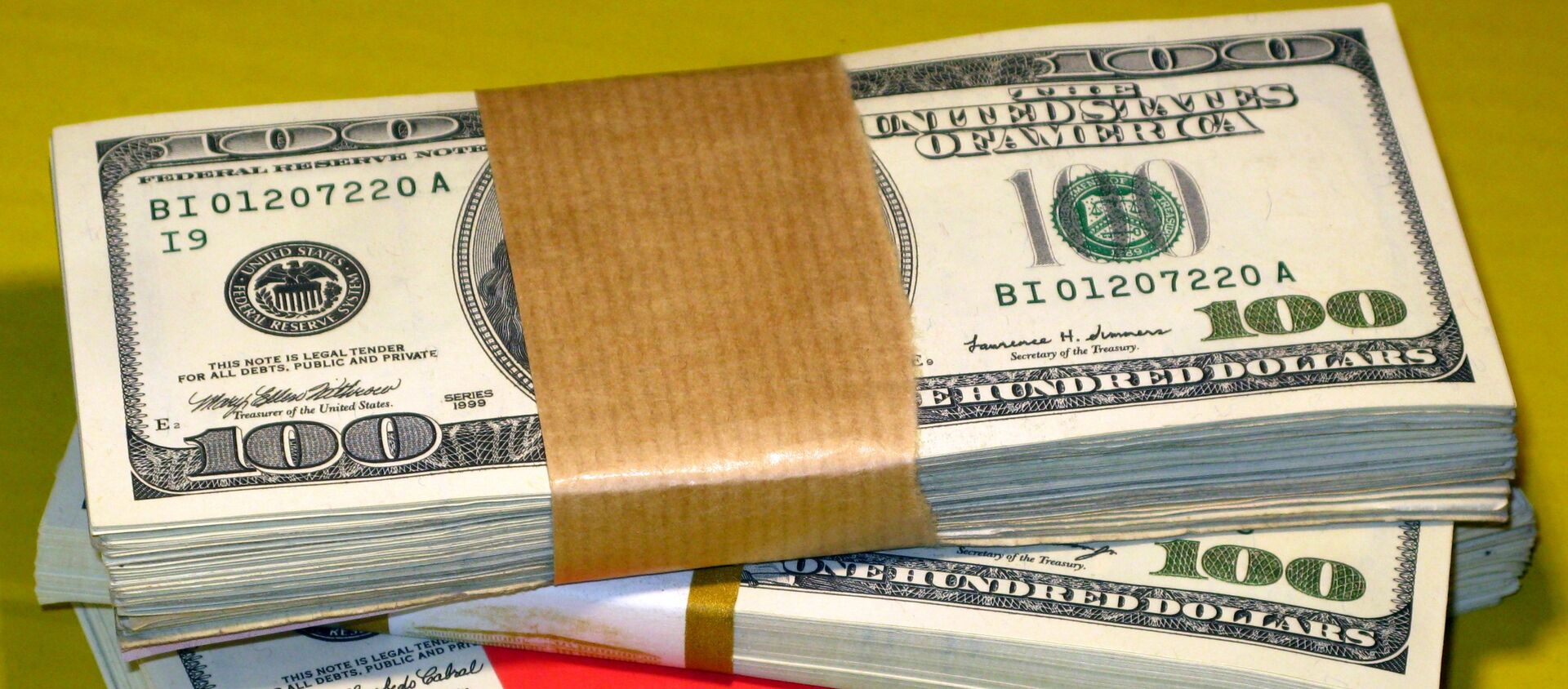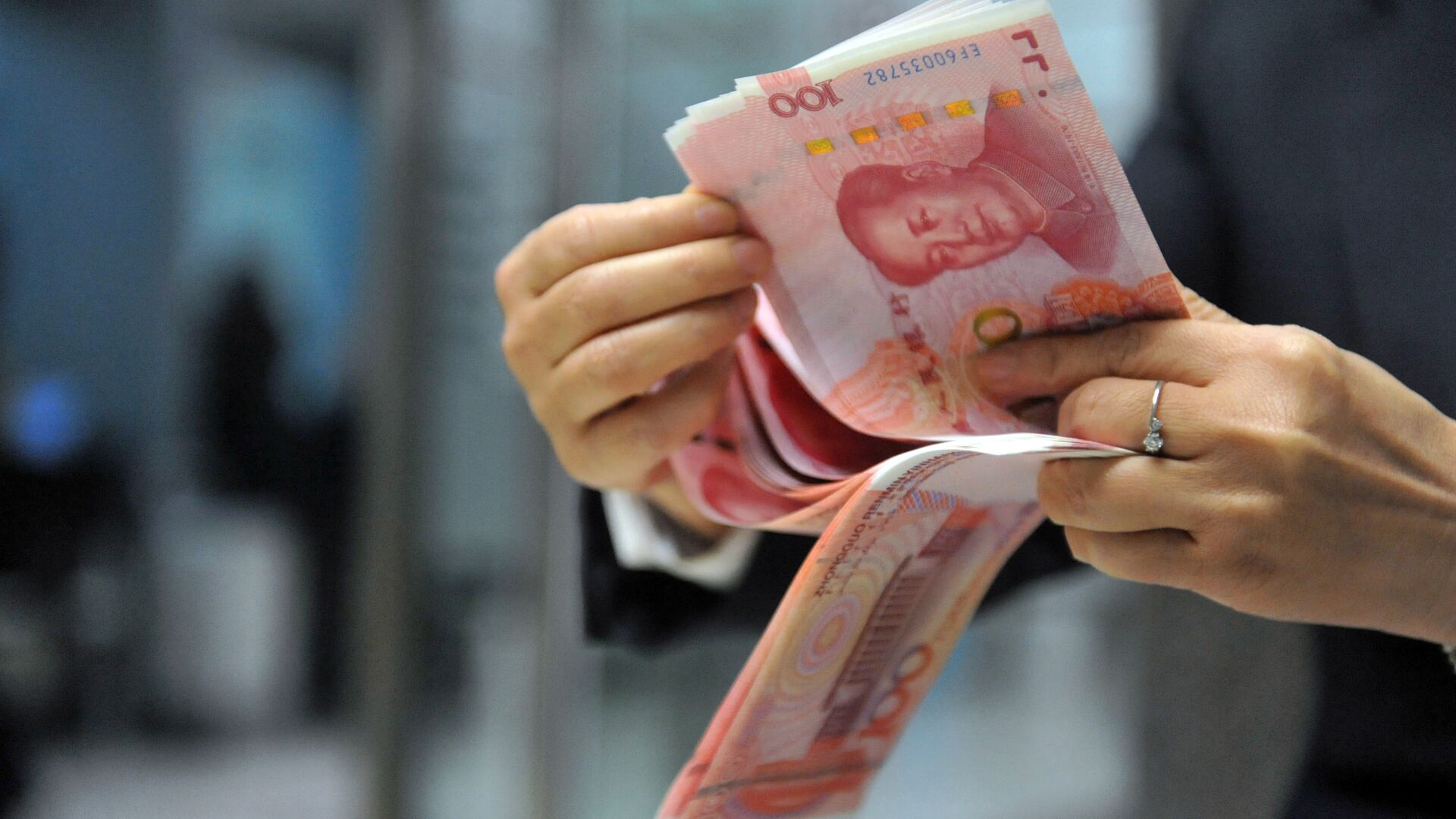https://sputnikglobe.com/20230330/china-brazil-strike-blow-against-dollar-through-bilateral-trade-1108959507.html
China, Brazil Strike Blow Against Dollar Through Bilateral Trade
China, Brazil Strike Blow Against Dollar Through Bilateral Trade
Sputnik International
China and Brazil are moving to a new level of bilateral trade. China has made a strong move to increase its economic influence in Latin America. Brazil's example could stimulate the displacement of the dollar from the Southern Common Market's (MERCOSUR) trade with China.
2023-03-30T14:07+0000
2023-03-30T14:07+0000
2023-03-30T14:17+0000
economy
brazil
china
mercosur
yuan
dedollarisation
brics
national currencies
https://cdn1.img.sputnikglobe.com/img/103409/96/1034099654_0:165:3185:1956_1920x0_80_0_0_0fc753aa7331108cb70e559b40b5c1b6.jpg
China and Brazil have signed an agreement to trade using their local currencies. The announcement was made Wednesday at a high-level China-Brazil business forum in Beijing. The instability of the US financial system, and consequently the dollar, is one of the main incentives for transferring payments to yuan and Brazilian reals, Chen Fengying, a research fellow at the China Institute of Contemporary International Relations, told Sputnik.“In the wake of the current international financial crisis, many countries are taking steps to diversify their currency baskets. The exchange rate volatility is mainly due to a sharp increase in interest rates by the Fed. This is causing market anxiety due to the uncertainty of US monetary policy, which reflects on the stability of the dollar. In the past, both China and Brazil were in the dollar zone, and it was necessary for the dollar to remain stable in order to maintain bilateral trade stability. The current instability of the US dollar exchange rate negatively affects bilateral trade and investment and is detrimental to the interests of China and Brazil. In addition to Brazil and China, Russia and countries in the Middle East also use the method of settlement in local currency on the basis of swap agreements. This allows them to minimize risks, protect their interests and assess the potential of their own currencies.”The transition to local currencies will promote the development of China-Brazil cooperation in food and minerals, and also open up new opportunities for the export of high value-added goods from China to Brazil and from Brazil to China. These are the most promising areas of cooperation identified at the Beijing Business Forum.According to expert Chen Fengying, the transfer of investments into local currencies will also bring significant bonuses. Brazil has become China's largest investment destination in Latin America.More than 25 countries, including Chile and Argentina, already settle their accounts with China in yuan. Brazil's example may encourage other Chinese partners in the region to switch to trade settlements in national currencies, said Mikhail Belyaev, a Russian independent expert on financial and economic issues:After Argentina, Brazil is the second Mercosur country to switch to local currencies for its trade with China. This is a strong incentive for the other two Mercosur players, Uruguay and Paraguay. Especially since China and Uruguay are negotiating a free trade agreement.
https://sputnikglobe.com/20230128/new-currency-zones-taking-shape-within-brics-as-global-dollar-system-crumbling-economist-says-1106787680.html
https://sputnikglobe.com/20210125/how-low-can-the-us-greenback-go-1081875655.html
brazil
china
Sputnik International
feedback@sputniknews.com
+74956456601
MIA „Rossiya Segodnya“
2023
Sputnik International
feedback@sputniknews.com
+74956456601
MIA „Rossiya Segodnya“
News
en_EN
Sputnik International
feedback@sputniknews.com
+74956456601
MIA „Rossiya Segodnya“
Sputnik International
feedback@sputniknews.com
+74956456601
MIA „Rossiya Segodnya“
bilateral trade, china, brazil, yuan-denominated trade, latin america, mercosur
bilateral trade, china, brazil, yuan-denominated trade, latin america, mercosur
China, Brazil Strike Blow Against Dollar Through Bilateral Trade
14:07 GMT 30.03.2023 (Updated: 14:17 GMT 30.03.2023) China and Brazil are moving to a new level of bilateral trade. China has made a strong move to increase its economic influence in Latin America. Brazil's example could stimulate the displacement of the dollar from the Southern Common Market's (MERCOSUR) trade with China.
China and Brazil have
signed an agreement to trade using their local currencies. The announcement was made Wednesday at a high-level China-Brazil business forum in Beijing.
The two sides will set up a clearing house to facilitate settlements without using the US dollar and loans in local currencies. This will help companies make transactions easier and cheaper. Settlement in local currencies will also minimize financial risks in trade transactions due to fluctuations in the dollar's exchange rate.
The
instability of the US financial system, and
consequently the dollar, is one of the main incentives for transferring payments to yuan and Brazilian reals, Chen Fengying, a research fellow at the China Institute of Contemporary International Relations, told Sputnik.

28 January 2023, 13:38 GMT
“In the wake of the current international financial crisis, many countries are taking steps to diversify their currency baskets. The exchange rate volatility is mainly due to a sharp increase in interest rates by the Fed. This is causing market anxiety due to the uncertainty of US monetary policy, which reflects on the stability of the dollar. In the past, both China and Brazil were in the dollar zone, and it was necessary for the dollar to remain stable in order to maintain bilateral trade stability.
The current instability of the US dollar exchange rate negatively affects bilateral trade and investment and is detrimental to the interests of China and Brazil. In addition to Brazil and China, Russia and countries in the Middle East also use the method of settlement in local currency on the basis of swap agreements. This allows them to minimize risks, protect their interests and assess the potential of their own currencies.”
Brazil is China's ninth largest trading partner, and China is Brazil's largest trading partner. China overtook the US as Brazil's top trading partner in 2009. According to statistics from China's General Administration of Customs, bilateral trade reached $171.49 billion in 2022, an increase of 4.9 % from the previous year. Brazil's exports to China totaled $89.43 billion in 2022, according to official Brazilian data, or 26.8 % of its total exports.
The transition to local currencies will promote the development of China-Brazil cooperation in food and minerals, and also open up new opportunities for the export of high value-added goods from China to Brazil and from Brazil to China. These are the most promising areas of cooperation identified at the Beijing Business Forum.
According to expert Chen Fengying, the transfer of investments into local currencies will also bring significant bonuses. Brazil has become China's largest investment destination in Latin America.
“Brazil's decision to trade with China using its own currencies is correct and timely, especially in the context of the annual growth of bilateral trade. Settlement in local currencies can best support the stability of bilateral trade, strengthen the confidence of capital market participants in the future, and reduce the costs for companies caused by fluctuations in the U.S. dollar exchange rate. Under the announced agreement, only trade transactions between China and Brazil will be conducted in local currency for the time being. Both sides will benefit even more from expanding the scope of the agreement to include investment.”

25 January 2021, 15:08 GMT
More than 25 countries, including Chile and Argentina, already settle their accounts with China in
yuan. Brazil's example may encourage other Chinese partners in the region to switch to trade settlements in national currencies, said Mikhail Belyaev, a Russian independent expert on financial and economic issues:
“It is certainly a strong example for other countries to take the same step as Brazil. The whole of Latin America is under quite strong American influence, including financial influence. Brazil is also keeping an eye on America. But it is moving away from the dollar because it benefits from it. The dollar is ‘toxic.’ And if it is ‘toxic’ for Russia today, it does not mean that it will not be ‘toxic’ for, say, Brazil or any other Latin American country tomorrow. This fact serves as a catalyst for countries in the region to follow Brazil's example and develop trade settlements with China in their national currencies. At the same time, it strengthens China's economic and financial influence in the region.”
After Argentina, Brazil is the second Mercosur country to switch to local currencies for its trade with China. This is a strong incentive for the other two Mercosur players, Uruguay and Paraguay. Especially since China and Uruguay are negotiating a free trade agreement.




